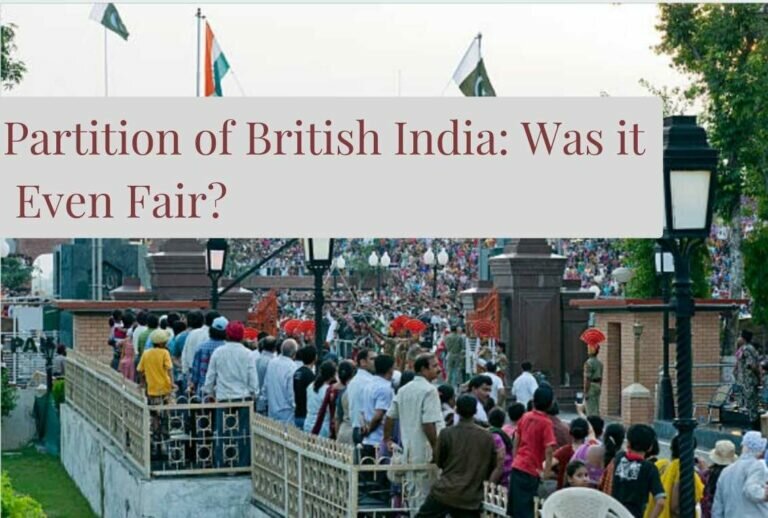Quaid-e-Azam: A Charismatic Leader in Politics
What is a Charismatic Leader?
The old social, economic, and political systems of the societies that gained independence from European slavery were disintegrated due to the attitudes of modernity. New classes and groups were born. Traditional institutions either succumbed or lost their usefulness or failed to deal with the mobilizing social groups. As a result of all this, a vacuum was created, the first manifestation of which was the crisis of governance. This crisis paves the way for the emergence of a charismatic leader with extraordinary abilities to act as a bridge between the old obsolescence and the uncertain future that is unfolding. Therefore, the task of a charismatic leader is to provide a formula that can overcome the frustration of his people.
However, this is not so much as offering a formula. A charismatic leader must also be able to mobilize his people based on his formula. It is only after accepting this formula that the people can add their support to the style of governance embodied in his personality. Finally, he should also be able to guide people to the promised land with all realism.
In more effective terms, the rise and character of a charismatic leader are compounded by two aspects of factors. Anecdotal and personal.
Also Read: The Impact of Artificial Intelligence on the Global Job Market
1. Anecdotal Factors
These factors include the Failure of the traditional system of governance and an inadequacy of the traditional legal system of governance.
2. Personal Factors
Personal factors include the extraordinary abilities of a leader, the ability to present a formula for solving the problems of his people, the ability to convince people of a new kind of governance, and the ability of guidance to reach on required destination with the success of those people.
In this article, we will apply them to the personality of Quaid-e-Azam Muhammad Ali Jinnah in order to assess how far he can be called a charismatic leader.

Also Read: Both Parents Should Assume Equal Responsibility in Raising a Child
Crisis of Indian Muslims
The above-mentioned crisis, in one word, has three interrelated arguments: (i) Hindu Muslim Communal Issue (ii) The failure of the British system of government, introduced in India, to satisfy the interests and aspirations of the Muslims, and (iii) The decline of British power in India and the fear of a projected Hindu Raj. Hindu-Muslim sectarianism was rooted in long-standing differences. These differences actually indicated the contrast and compatibility between Islam and Hinduism. It is difficult to find two beliefs or attitudes towards life which are so strongly opposed to each other.
It is not surprising that despite living together in the same village and city, social relations between the two groups remained almost non-existent. But religious contradictions and disharmony were not the only problems in Hindu-Muslim relations. The situation was further complicated by economic and political factors.
Economic Crisis
Economic development under British rule clearly favored Hindus over Muslims. Most of the benefit recipients were upper-caste Hindus, though the Parsis and Sikhs were also performing well in this regard. By the armed attempt of 1857 to restore the Mughal Empire to power, the British not only deprived Muslims of administrative posts but also were subjected to their deliberate oppression. Adding to the woes happened when the Muslims themselves began to resist the imposition of a foreign system of education and government, as they scorned it.
Later, they compromised with the British government and educational system, which was largely the result of the tireless efforts of Sir Syed Ahmad Khan. However, till that time they were lagging behind the Hindus in education and literacy by a considerable margin.
Business Crisis
Regarding trading, although Muslims were very eager to get rid of British rule, they were not at all willing to trade for a Hindu Raj. Constitutional and extra-constitutional safeguards could neither protect nor promote their interests. The issue of Muslims, in the words of the Quaid-e-Azam, had become irreversible.
Administrative Crisis
It was evident that Hindus were able to replace Muslims in important administrative positions. The situation in the business sector was no different. By the time the Muslims entered the field, the Hindu business community had become much stronger in the economy. Birlas, Tata, and Dalmiya were big industrialists who financially supported Hindu interests in general and the Indian National Congress in particular. Muslim industrialists were few and scattered.
Also Read: Pakistan and the Future of Kashmir Cause
Appearance of Quaid-i-Azam
But the leader himself believed that there is a way out of this difficult situation. As he informed the All India Muslim League meeting in Lucknow in 1937, the solution to the problems lies in self-organization. Moreover, the full development of Muslim power is to the exclusion of all other possibilities. It would be possible, he said, we would be in a position to compromise with the Hindus. Because compromise can only happen between two people of equal status and unless two parties learn to respect each other and fear each other, the way to compromise cannot be paved. Politics is about power and not about trusting in rummaging for justice, honesty, and goodwill.
With this strong will, the Muslims of India realized their aspirations and saw the true reflection of the claim of a separate political nation. They flocked to the Quaid-i-Azam in thousands and brought him to the fore in the politics of Muslim India as a charismatic leader of the Muslims of India. Even before emerging as a charismatic leader, the Quaid was the top politician of Muslim India.
His Remarkable Works
In 1913, he successfully fought the case of Waqf Ul-Olaad, which was of great importance to the Muslims. He acquired immense respect and reward from people in form of love for this. After this, he played an important role in Lucknow Pact. This was the only occasion when Congress recognized some of the basic demands of the Muslims, including the demand for separate elections.
The most important role in presenting the interests and demands of the Muslims is in the form of fourteen points in 1929. Those points continued to work as faith for the Muslims until the start of the round table conferences in London. He was known for his character, courage, orthodoxy, and honesty. Furthermore, he was known for his tenacity, political insight, organizational skills, and ability to understand problems and find the best solution for them. But the Quaid had not yet achieved the status of an undisputed leader for the Muslims.
In the 1930s
It happened when in the 1930s, Muslims became the victim of the crisis. It caught them between two dilemmas. At that time, the Muslims looked to him as a savior and leader and sought guidance to get them out of their hopeless and helpless situation. The difference between the early and last life of the leader was not the difference in his personal abilities but the difference in the situation. And in fact, it was the difficult and insecure situation of the Indian Muslims that made him their unique leader, their Quaid-e-Azam, and their charismatic leader.
As a charismatic leader, the Quaid possessed certain very important qualities that made him ideally suited to the crisis the Muslims were facing. These qualities helped him a lot in his early life to protect and stabilize him from political vicissitudes but now they were his true asset. It is important to highlight some of these features.
Also Read: Digital Democracy: Social Media and Political Participation Essay
His Features:
First, he had complete faith in himself and his goal. As he told one of his political rivals, “You go after what makes people happy, so you act accordingly. My approach is completely different. I first decide what to do what is right and then I do it. People come to me and opposition ceases to exist“. It was one hundred percent the result of their confidence in themselves that nothing could make them of their purpose. So they could not be bought or tamed, nor could any pressure be put on them, nor could they be trapped in any work that they did not choose themselves.
Secondly, he did not only encourage the aspirations of the Muslims. Rather, he was perhaps the only Muslim leader who knew how to express his mental feelings in the form of concrete proposals. This can be seen in Muhammad’s Treaty of Lucknow, the Daily Muslim Proposals, and the Fourteen Points. These are all a combination of all the Muslim demands.
Thirdly, the Quaid, as a constitutional figure and with all the essentials of a constitutional mind, was to be included in the future constitution of India. He was better suited than any other Muslim leader to negotiate with Congress and Britain for the interests of the layman. He seemed a natural fit for a constitutional role from the start. Moreover, he was a part of almost all constitutional studies in India, whether in or outside the Constituent Assembly, be it between the League and the Congress or between the League, the Congress, and the British Government.
Last but not least:
Quaid-e-Azam was shrewd and a better strategist than any of the contemporary political leaders who participated in this game in India. He knew very well when to be firm and when to be flexible in the force of reality and expediency. He never shied away from the facts of any situation, no matter how difficult and serious it was. These qualities, which became more refined with time and which he displayed on a large scale in the decisive years of 1937-47 and which were appreciated by the Muslims, were equally acknowledged by those who demanded them.







